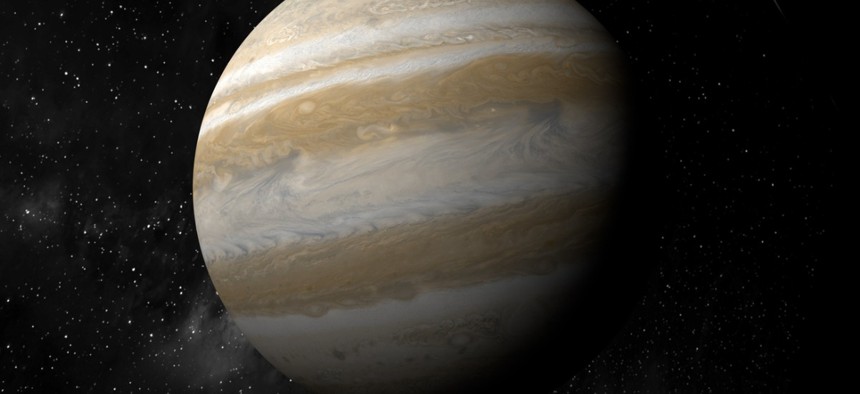Air Force Lab, New Mexico Institute Get Set for ‘High-Powered Window to Space’

Planet Jupiter. Just_Super/istockphoto
Once completed, a sophisticated new telescope will support national security and could provide some of the clearest resolutions of space-based objects.
The Air Force Research Laboratory is engaging in a new collaboration that will provide U.S. and U.K. researchers and astronomers with one of the largest and sharpest Earth-based optical telescopes to ever operate.
That sophisticated tool—the Magdalena Ridge Observatory Interferometer, or MROI—will be based in Socorro, New Mexico on a site managed by the New Mexico Institute of Mining and Technology, or NMT.
Astronomical interferometry refers to a technique experts employ to obtain the clear resolution of a big telescope via multiple smaller telescopes. Once it’s fully completed, which is expected to be in 2026, the MROI will be made of an array of ten collecting mirrors that together will provide potentially the highest-ever resolutions of faint and complex astronomical targets, anticipated to be at over 100 times that of the Hubble Space Telescope.
In a press release published on Monday, AFRL Contracting Officer Sara Telano confirmed that NMT is set to receive $6.2 million in congressional funding to fulfill the first phase of a likely $30 million, five-year effort to build three telescopes and two scientific instruments of that interferometer.
“Upon completion of the telescopes, scientists, engineers and students will be conducting world-class research in space situational awareness, gaining important knowledge of space physics, while using these new systems capable of capturing images in the Geosynchronous Earth Orbit and beyond,” Telano told Nextgov in an email on Tuesday.
Geosynchronous orbit is essentially a high Earth orbit where satellites can match Earth's rotation to better keep an eye on weather, communications, surveillance and other elements. The MROI, deemed by Telano to be “a high-powered window to space and the universe,” will help academic researchers study newly forming planets around young stars and gauge the health and orientation of human-built objects in those realms of space. For AFRL officials, it will introduce nascent sensing instruments that could expand space domain awareness and defense.
The laboratory’s Space Vehicles Directorate at Kirtland Air Force Base is managing the funding contract underpinning the MROI’s making.
“Historically speaking, AFRL has received enthusiastic support from the entire New Mexico congressional delegation, which has been supporting this project for more than 20 years,” Telano explained in the email. The current funding effort was part of the fiscal 2021 National Defense Authorization Act, she added, “which authorized a program increase for ground-based interferometry.”
NMT is planning for the facility to be available for public tours and K-12 school programs down the line. The institution also aims to promote collaboration with other state, regional, national and international universities.
At this point, more than 40 scientists, engineers, students and project support staff from the New Mexico-based university are set to access resources through this project and government funding. That team will also partner up with academics from the University of Cambridge, which is supporting the construction of the new instrument.
Telano noted that the U.K. university brings more than 30 years of experience in optical and infrared interferometry to the collaboration.
“In the late 1980’s, they were the first to pioneer optical closure phase measurements, separated-element optical imaging and image reconstruction software. Today, they are the leaders in interferometer system design and engineering,” she said. “This partnership will augment access to laboratory-wide technical experts, and provide postgraduate and undergraduate students a broader learning opportunity.”



